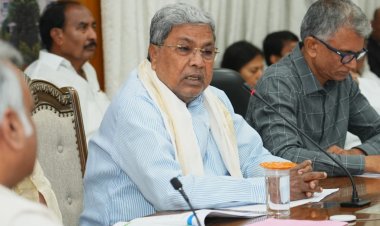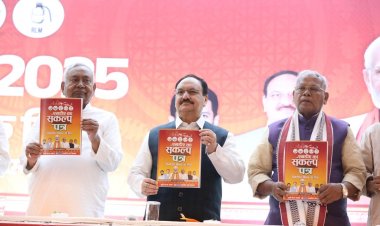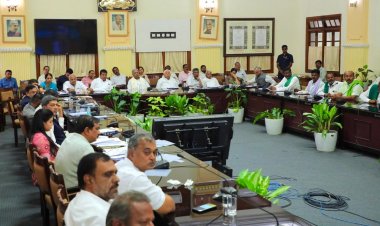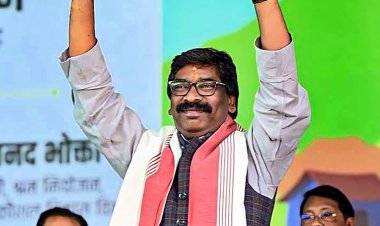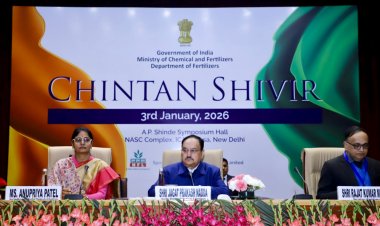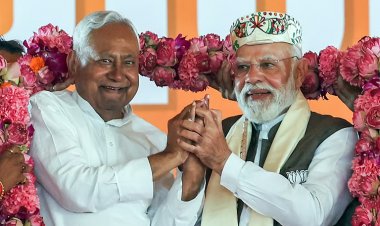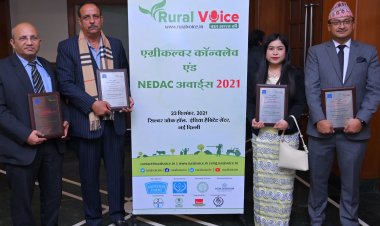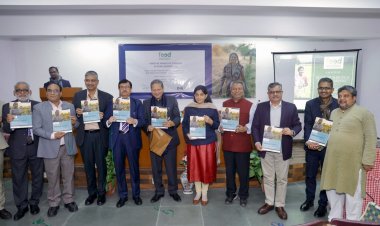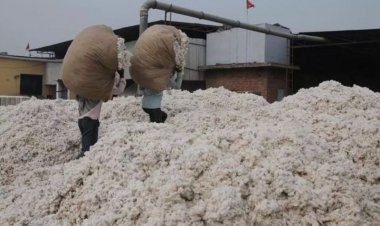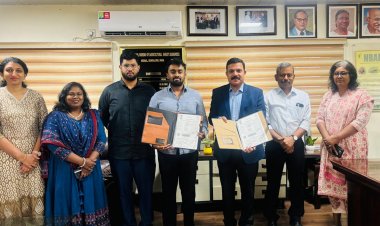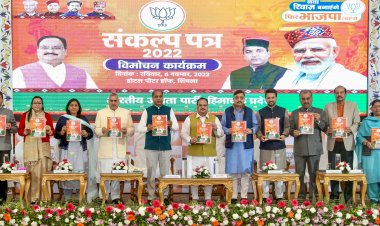Panchayat elections in Uttar Pradesh: Where are we heading?
In this article, an attempt has been made to list out the issues to be asked by the voters to the perspective contenders of different posts in the election fray. Also, what can be done to root out the corruption prevailing at the panchayat level?

Panchayat elections are being held in Uttar Pradesh. Electioneering is going on. The elections will be conducted in different rounds. The first round will take place on April 15, 2021.
Although elections are not being held on party symbols, there is the active involvement of political parties in these elections. Earlier this was not so but eyeing the money being transferred, the enticement of the political parties has increased. For instance, leaving aside grants from the State Finance Commission, Centrally sponsored Schemes and State-Sponsored Schemes, the Panchayats in the State will be getting Rs 38,012 crore from the Central Government for five years from 2021-22 to 2025-26 under the award of the Fifteenth Finance Commission (FFC). This amount is more than that recommended by the Fourteenth Finance Commission.
People are very eagerly seeing the names of the declared candidates to know whether the candidates belong to their castes. In fact, ideology has taken a back seat because a number of candidates crossed their boundaries and joined another party in the hope of winning elections. The convergence of different political forces is taking place to give a good fight to opposition forces in the elections.
In this scenario, the elections for the representatives of the three tiers of the Panchayati Raj System in the State numbering about 8,26,458 from 75 Zila Panchayats (ZPs), 822 Kshetra Panchayats (KPs) and 58,791 Gram Panchayats (GPs) would be interesting to comment on from field experiences.
In fact, neither those who are in the fray know what their agenda would be if voted to power nor the voters are aware of what they should ask the contenders for except raising demands for construction of khadanza (vertical lying of bricks) and padenza (horizontal lying of bricks). The contenders are canvassing by saying that they would develop the villages, they would ease whatever problems they have been facing and finally “please remember us when you are going to cast votes”. Caste factor is also used as an important factor in canvassing. In this article, an attempt has been made to list out the issues to be asked by the voters to the perspective contenders of different posts in the election fray.
Have they seen and read the Uttar Pradesh Panchayati Raj Acts? If yes, what are the main features of the Acts? Is there one act of Panchayats or different acts for GP, KP and ZP? What is the role of the ward member in the Gram Panchayat Development Plan (GPDP)? What are the roles of frontline workers in the formulation of GPDP? How many meetings of GP are held in a month? And the same questions for KP and ZP asking about holding of meetings at that levels.
In order that Panchayats to function effectively, would committees be constituted at the Panchayat level? If they say yes, ask the name of these committees which would be constituted at different levels of the Panchayats. How are the audits conducted? What are the conditions put by the FFC about the release of funds to Panchayats with regard to audits? What are the functions of the members of the KPs and ZPs? It was observed that their roles have been reduced to cast votes in the elections of the Pramukh at KP level and President at the district level and that is also not without a price. What are Sustainable Development Goals (SDGs)? How are these related to the activities of the Panchayats at different levels? This question would be more relevant when those in the fray would say that they would do development in the village. They may be asked as to how development is defined in the local context.
The above questions are meant to do participatory planning in a de facto sense. The 73rd Constitutional Amendment expects the Panchayats to prepare plans for economic development and social justice, including 29 subjects listed in the 11th Schedule of the Constitution. It means the preparation of the plan is to raise not only the income and wealth of the village in average terms but in terms of equity also. In other words, those households who are on the margin should also be benefited. In this context, voters must ask about what the meaning of plan formulation is for economic development and social justice.
This issue has also become more relevant in a scenario where governance at the local level is not on the basis of people’s participation but through ‘setting’ with different stakeholders in getting things done. In general, the elected representatives of Panchayats speak about meetings and talking with people for activities to be carried out. But when they have a ‘setting’ with officials and other stakeholders in the functioning of the Panchayats, they do not bother about the people and the functioning of the Panchayats as per rules and regulations.
It is disheartening to note that Panchayat elections have become a business deal among three stakeholders — the dominant caste leaders, the proxy candidates and the voters. In reserved constituencies, the dominant castes make direct investments for their proxy candidates. Siddhartha Mukerji conducted a study of three GPs of reserved constituencies of Gorakhpur district in Uttar Pradesh in 2018 and he revealed the reality by saying that on average Rs 5 to Rs 6 lakh was spent in elections campaigning and luring the voters in a GP. A president of GP survives in politics only if he pays commission at different levels of the chain, the links of which include the Gram Vikas Secretary, the Junior Engineer, and staff at the block level and ZP. This is an example of a ‘setting’. Hence, voters must be instrumental in breaking the ‘settings’ operating at different levels.
I would also like to caution the voters about accountability, which is one of the important conditions of effective rural governance. There is a direct relationship between contribution and accountability. Voters should also come forward to contribute to Panchayats in the form of taxes, fees, cess etc. because such contributions from voters give a sort of ownership of the Panchayats to the villagers. In this regard, it is appropriate to refer to Besley and Persson, who stated that there is a social contract between citizens and the state. The role of the state is to develop the conditions for affluence for all by providing basic services and protecting the vulnerable sections through redistribution. The citizens hold the state accountable if it does not honour the contract. Here the state may be interpreted as Panchayats.
However, the citizen does not have a stake to hold the state accountable if he does not pay in a visible and direct way for the services the state commits to providing. If a citizen does not pay, he becomes a free rider (using the service without paying), and cannot complain if the state provides poor service. It is only when he pays and uses the service that he will try to hold the state accountable. This is exactly relevant in the case of Panchayati Raj. Hence, voters also have the responsibility to contribute to the Panchayats’ funds. Only then can they hold the elected representatives accountable and make ‘setting’ irrelevant.



 Join the RuralVoice whatsapp group
Join the RuralVoice whatsapp group

















